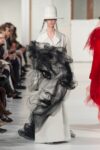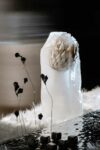
When Haute Couture Influences the Art of Table Setting
When fashion meets the table
There’s a natural connection between fashion and the art of the table. Both speak the language of materials, movement, light, and silhouette. Both express a way of seeing the world — a way of living with beauty.
On my tables, as on a runway, every element finds its place. Fabrics flow, glass catches the light, and shapes echo one another. A tablecloth becomes a drape. A plate, a line of couture. A flower, an accessory. It’s in these subtle correspondences that a table comes to life.
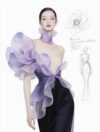
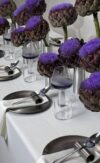
Inspiration from the atelier
As in a couture studio, everything begins with materials. The touch of velvet, the transparency of crystal, the softness of linen, the gleam of metal.
Composing a table is a bit like building a collection: it’s all about contrast, rhythm, and the way light moves across a surface.
Some tables are structured like silhouettes — elegant, sculpted, sometimes daring. Others feel more like a capsule collection — intimate and spontaneous. But there is always intention. Always an emotion to translate.
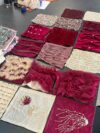
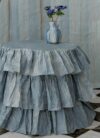
Color as narrative
Colors, too, have their language. A soft green might recall a spring runway; a powdered gold, a vintage jewel; a deep brown, the leather of a well-traveled bag.
On the table, these hues become a story.
I often play with these dialogues — unexpected combinations, sometimes gentle, sometimes bold. As in fashion, surprise is essential. It’s what creates personality, depth, and emotion.
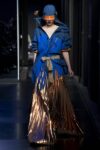
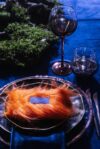
Between couture and character
The great couture houses have always celebrated balance — between structure and lightness, tradition and invention. The same dialogue happens on a table.
A folded napkin takes on sculptural volume. An antique plate brings heritage. A contemporary object adds boldness and movement.
This mix is at the heart of Les Tables de Joséphine: an instinctive elegance born from the harmony between what has a history and what creates a new one.
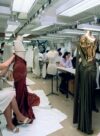
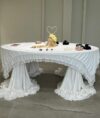
Elegance as emotion
Elegance is never a performance. It’s a quiet emotion that comes from intuition, from a gesture that feels right, from a glance that sees beauty in detail.
A table inspired by haute couture doesn’t imitate fashion — it captures its spirit. The invisible precision, the craftsmanship of touch, the delicate balance of structure and flow.
To host is to offer an aesthetic experience — a moment suspended between art and intimacy, where texture, color, and light tell a story.
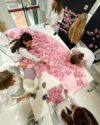
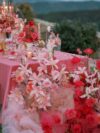
Conclusion
When fashion meets the table, a new world emerges: beauty becomes an experience, refinement becomes a language, and creation becomes connection.
Each table is a fleeting collection. Each dinner, a scene of emotion.
And perhaps, as in haute couture, perfection lies not in symmetry but in the feeling it leaves behind.
